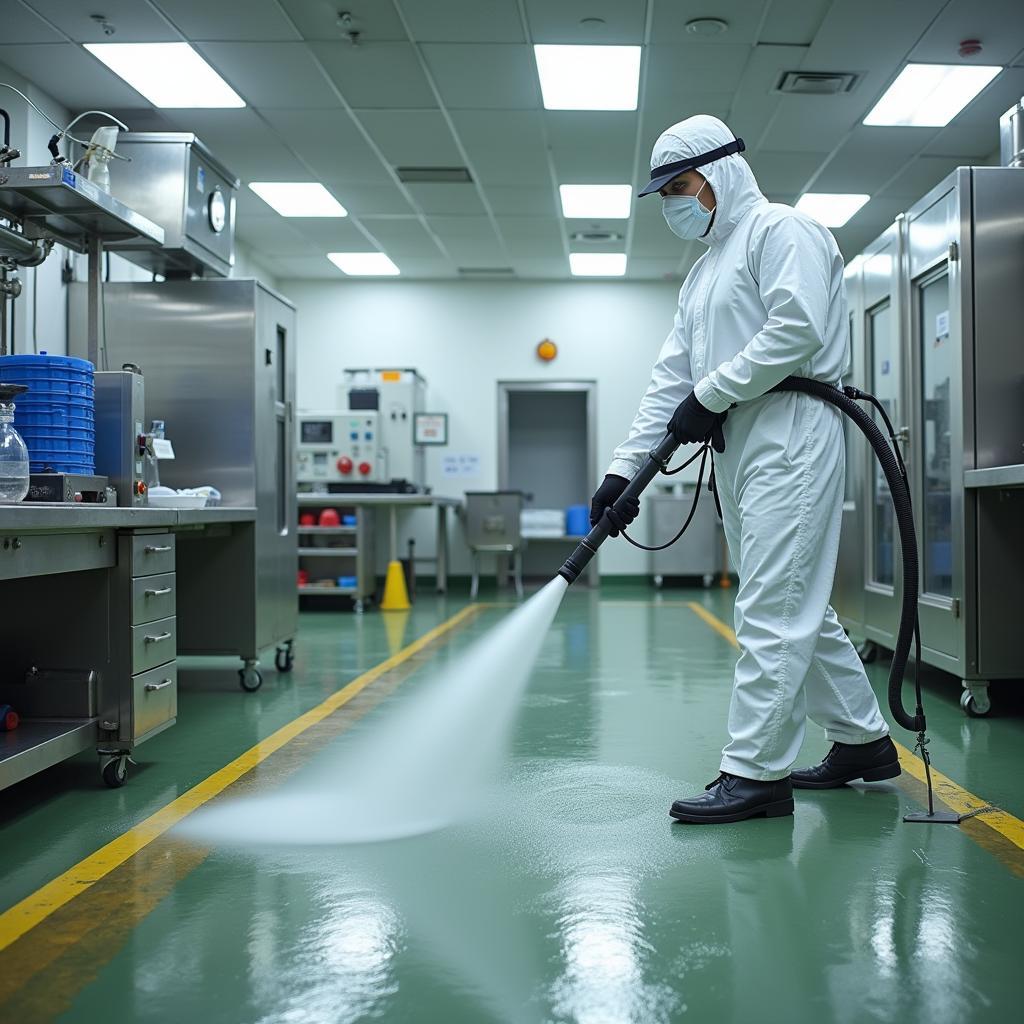Food Factory Flooring is a critical component of any food processing facility. It plays a vital role in maintaining hygiene, ensuring worker safety, and ultimately, protecting the quality of your food products. Choosing the right flooring can significantly impact your operational efficiency and long-term costs. This guide dives into everything you need to know about food factory flooring, from material selection and installation to maintenance and regulations.
Choosing the Right Food Factory Flooring Material
Selecting the appropriate flooring material is paramount for a successful food processing operation. Considerations should include resistance to chemicals, temperature fluctuations, impact, and bacterial growth. Some popular choices include epoxy, polyurethane, vinyl, and concrete. Each material has its own set of advantages and disadvantages, making it crucial to choose one that aligns with your specific needs.
Epoxy flooring offers excellent chemical and impact resistance, making it a popular option for high-traffic areas. Polyurethane flooring is known for its flexibility and ability to withstand thermal shock. Vinyl flooring provides a cost-effective solution for areas with less heavy-duty requirements. Finally, concrete, while durable, requires proper sealing and finishing to meet food safety standards.
Installation and Maintenance: Keys to Long-lasting Performance
Proper installation is just as important as selecting the right material. A poorly installed floor can lead to cracks, crevices, and other imperfections that can harbor bacteria and compromise hygiene. Ensure your chosen contractor has experience in food factory flooring installation and adheres to industry best practices.
Regular maintenance is essential to prolong the lifespan of your food factory flooring. This includes daily cleaning, periodic deep cleaning, and prompt repairs of any damage. Implementing a comprehensive cleaning and maintenance plan can prevent premature wear and tear, ultimately saving you money in the long run.
 Cleaning procedures for food factory floors
Cleaning procedures for food factory floors
Regulatory Compliance: Meeting Food Safety Standards
Food processing facilities are subject to strict regulations to ensure food safety. Flooring materials must comply with standards set by organizations like the FDA and USDA. These regulations often dictate specific requirements for sanitation, slip resistance, and chemical resistance. Understanding and adhering to these regulations is crucial to avoid penalties and maintain a safe and hygienic environment.
“Compliance is not just a checkbox,” says John Miller, a food safety consultant with over 20 years of experience. “It’s an integral part of building a sustainable and reputable food business. Choosing the right flooring and maintaining it properly demonstrates a commitment to quality and consumer safety.”
What is the Best Flooring for a Food Processing Plant?
The best flooring for a food processing plant depends on the specific needs of the facility. Factors to consider include the type of food being processed, the level of traffic, and the potential for chemical spills.
What are the Benefits of Seamless Flooring in Food Factories?
Seamless flooring eliminates grout lines and crevices where bacteria can accumulate, making it easier to clean and maintain a hygienic environment. It also provides a smoother surface for easier movement of equipment and personnel.
How to Clean Food Factory Floors?
Food factory floors should be cleaned regularly with appropriate cleaning agents and methods. This typically involves removing debris, applying a cleaning solution, scrubbing, and rinsing thoroughly.
Conclusion: Investing in Quality Food Factory Flooring
Investing in high-quality food factory flooring is an investment in the long-term success of your business. By carefully considering factors like material selection, installation, maintenance, and regulatory compliance, you can create a safe, hygienic, and efficient environment that protects your products, your employees, and your bottom line. Choosing the right food factory flooring is crucial for maintaining a safe and efficient operation. Remember to consult with flooring experts and regulatory bodies to ensure you make the best choice for your specific needs.
FAQ
- What is the most durable flooring for a food factory?
- How often should food factory floors be cleaned?
- What are the regulations for food factory flooring?
- How much does food factory flooring cost?
- What are the different types of food factory flooring available?
- How to choose the right food factory flooring contractor?
- What are the benefits of using anti-slip flooring in a food factory?
For further information on food processing plant design and best practices, explore our articles on [link to related article 1] and [link to related article 2].
Need help with your food factory flooring? Contact us! Call: 02437655121, Email: minacones@gmail.com or visit us at: 3PGH+8R9, ĐT70A, thôn Trung, Bắc Từ Liêm, Hà Nội, Việt Nam. We have a 24/7 customer service team ready to assist you.